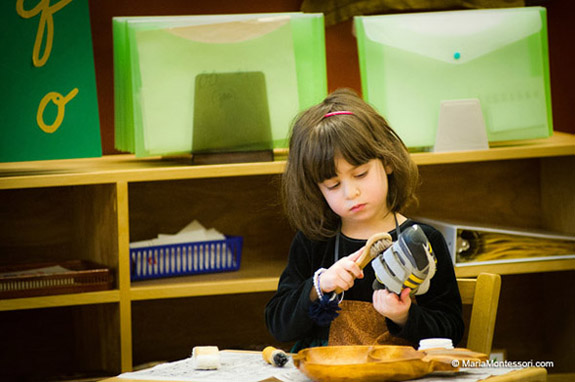
October 31, 2022
Freedom and Discipline are two words that are not usually used together, at least in regard to children. It seems counter-intuitive—how can you give kids freedom and still have discipline, or be disciplined and have freedom? It is generally understood that children can only “behave” when strict discipline is imposed on them, meaning their freedom is taken away– this is the thinking of traditional schooling. But Maria Montessori discovered that the two, freedom and discipline, indeed go hand in hand.
In traditional schools, discipline is imposed by the teacher/adult and onto the child. His motives and feelings do not matter. He must do as his teacher says, and obey unquestioningly. True discipline, however, comes from within the child. This inner discipline takes much longer to achieve than it does to simply tell a child “Sit down! Be quiet!” using threats of punishment. But it is much more beneficial and long-lasting, both for the child and those around him. This level of discipline cannot be achieved through commands and orders, but through experiencing freedom.
In the beginning, the young child is still struggling to gain control over his own movements. It is useless to urge a toddler to sit still, for he does not have the self-control and coordination over his mind and his body to attempt to obey such a command. At this time the child needs our help and care, not our scoldings, to help him achieve discipline. The child needs to experience the freedom to move at will and to choose his own activities. Through his work (in the Montessori classroom, helping with chores at home, through his own self-guided play) he develops himself physically, learning how to control his muscles and coordinate his movements; and also mentally and emotionally, as he practices thinking through problems, choosing how to spend his time, and experiencing how others react (both positively and negatively, important social cues) to his actions. This freedom requires a set of limits, just a few simple rules for what is and is not acceptable behavior, which must be explained to the child in a way that makes sense to him (after all, it is much easier to follow rules when we understand the reasons behind them- this goes for children and adults alike). Experiencing the natural consequences to his actions helps the child connect cause and effect, and eventually be able to think through and predict the possible consequences before he acts so he may choose more wisely.
At first, it is the guide and the parents who enforce these limits and their natural consequences, but over time we can hand over more freedom and responsibility to the child, waiting until he is ready to accept it. The only way we learn to make responsible decisions is through practice- it is not a skill that can be taught, but one each individual must learn by trial and error. And so, it is through freedom that the child learns how to discipline himself– how to control his body and movements; how to think through his options when making decisions; how to be a responsible person who is respectful of himself and others. He develops his own inner compass for what is right and wrong, without needing external rewards or threats of punishment to do the right thing.